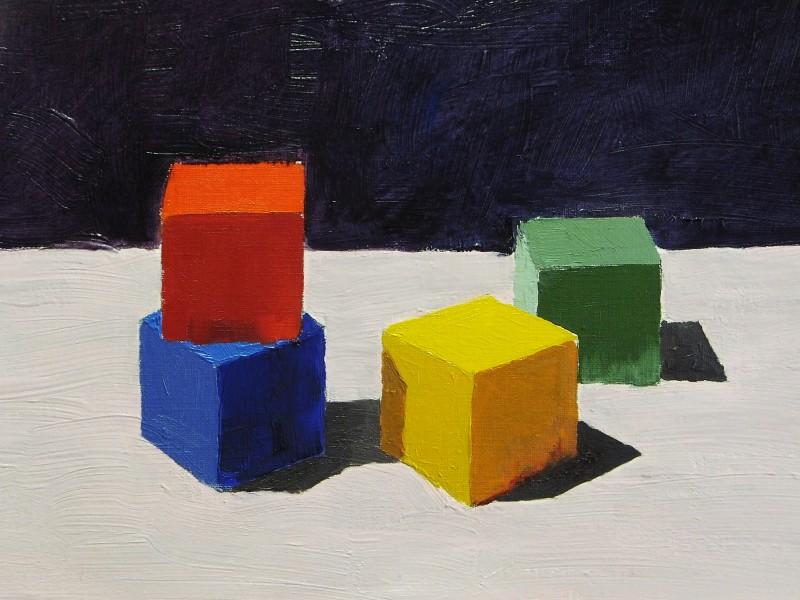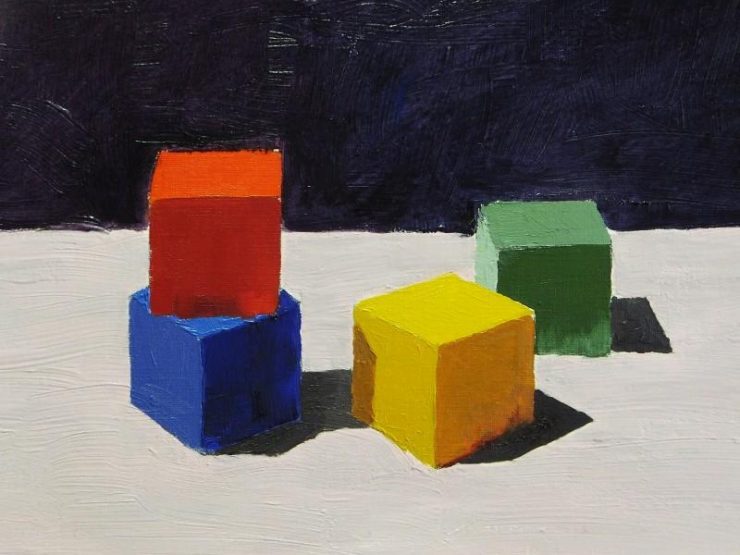
Learning color by doing block studies sounds simple, but it is one of the basic skills an artist needs and is often the one that is the most neglected. Many beginners use either too much garish color, or go too far the other way and do not use enough color in their grays. The best color is somewhere in between and can produce a beautiful painting. I learned color indirectly from the two great mid-twentieth century color schools in the United States: the Henry Hensche and the Sergei Bongart schools. There is only one way to learn color and that is to do a lot of block studies. Painting colored blocks is a quick and efficient way to learn color.
“Slovenliness in matching color is more difficult to overcome in later life than slovenliness in drawing. Neglect of the science of color in early days can only bring regret in later life, when each year adds to our conviction of the possibilities that mastery over color can achieve.” Rex Vicat Cole, The Artistic Anatomy of Trees, 1916
How to do it
Setup
- Start with two blocks against a contrasting background.
- Use geometrically shaped objects, each of a different color.
- Place objects close together.
Position objects so that the light casts strong shadows.
Paint close to the setup – almost within touching distance.
Steps
- Place color spots in the center of the shapes for the light and shadow side of each object, and for the background.
- Adjust all of these color spots relative to each other until the relationships are correct. This is somewhat analogous to getting a chord in music to harmonize. You may have to move around the canvas four or five times.
- Adjust each color spot and get the approximate proportion of the color spot correct by working out from the center. Check the relationship between each color spot and adjust if necessary.
- Work on the boundary or contour of each block to get its exact shape.
- Change the setup, colors, and lighting conditions, and paint more block studies. The aim is to do 100 or more of these block studies. By then you will have much better skills at capturing the exact colors.
- As you progress, you can start to paint other still life arrangements. Once you know how to paint a rectangle, sphere, pyramid or cone, you can paint any object in life.
For more information
For more information on color see:
